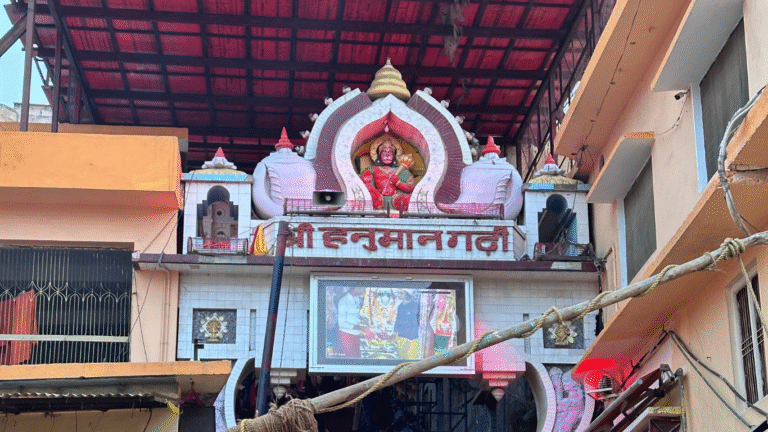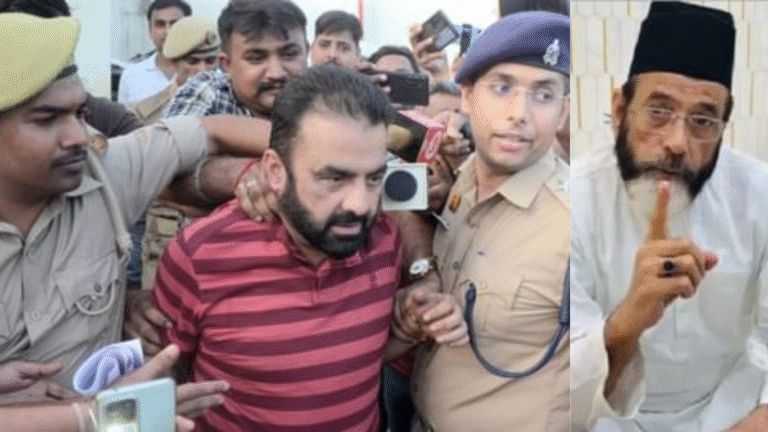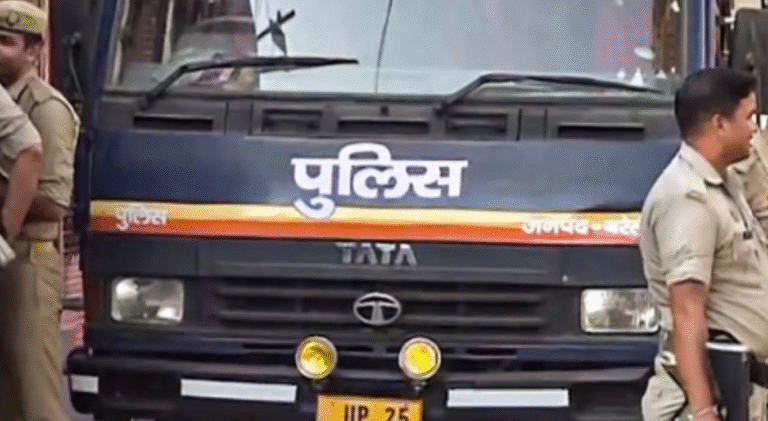
If you’ve ever wondered about the man behind the headlines in Uttar Pradesh, Yogi Adityanath’s story is one worth telling. Born as Ajay Singh Bisht, he’s gone from a simple village kid in the hills to becoming the Chief Minister of India’s most populous state. His life blends spirituality, politics, and a strong sense of Hindu nationalism. As a monk leading the Gorakhnath Math and a key figure in the Bharatiya Janata Party (BJP), Yogi has shaped UP’s landscape in big ways since 2017. This biography will give you the real scoop – no hype, just facts. We’ll cover his early days, rise in politics, time as an MP, and what he’s done as CM. It’s a tale of dedication, controversy, and change. Let’s dive in and see how one person’s path can influence millions.
Early Life and Family Background
Yogi Adityanath, whose birth name is Ajay Mohan Singh Bisht, entered the world on June 5, 1972, in the quiet village of Panchur in Pauri Garhwal district, which was part of Uttar Pradesh back then but is now in Uttarakhand. He grew up in a Garhwali Rajput family, the second among seven siblings – four brothers and three sisters. His father, Anand Singh Bisht, worked as a forest ranger, a job that kept the family connected to nature in the Himalayan foothills. Life in Panchur was modest, with the family facing the usual ups and downs of rural India. Anand Singh passed away on April 20, 2020, at AIIMS Hospital in New Delhi, leaving behind a legacy of service.
From a young age, Ajay showed curiosity about the world around him. The Garhwal region, with its spiritual vibes and stories of saints, likely planted seeds of devotion in him. He was close to his family, but as a teen, he started questioning bigger things like society and religion. His brothers recall him as thoughtful, often discussing national issues even in school days. The Bisht family wasn’t wealthy, but they valued education and hard work. Ajay’s early years were marked by the simplicity of village life – helping with chores, playing local games, and absorbing the cultural richness of Uttarakhand. This background grounded him, shaping his views on self-reliance and community service. By the time he was in his early 20s, he was drawn to larger causes, setting the stage for his transformation. It’s this humble start that many say fuels his drive today, reminding him of the struggles faced by everyday folks in UP and beyond.
Education and Path to Monkhood
Ajay Singh Bisht’s schooling took him through local institutions in Uttarakhand, where he focused on science subjects. He earned a bachelor’s degree in mathematics from Hemwati Nandan Bahuguna Garhwal University in Srinagar, Uttarakhand. This education gave him a solid foundation, but it wasn’t just about books for him. During his student days, he got involved in nationalist movements, sparking his interest in social and religious reforms.
In the early 1990s, a big shift happened. Ajay joined the Ram Janmabhoomi movement in Ayodhya, a campaign pushing for the construction of a Hindu temple at the site of the Babri Masjid. This activism led him to the Gorakhnath Math in Gorakhpur, a key center for the Nath Sampradaya, a Shaivite sect tracing back to Guru Gorakhnath. There, he became a disciple of Mahant Avaidyanath, the math’s head and a veteran Hindutva leader. At just 22, on February 15, 1994, he took sannyasa (monkhood) and was named Yogi Adityanath as Avaidyanath’s successor. This wasn’t a casual choice; it meant leaving family ties and dedicating life to spiritual and social work.
As a young monk, Yogi immersed himself in the math’s traditions – yoga, meditation, and community service. He managed over 30 educational and medical institutes linked to the math, providing aid to the poor. His guru, Avaidyanath, had a political history too, switching from Hindu Mahasabha to BJP in 1991, which influenced Yogi’s worldview. This phase built his charisma; he started campaigns against caste discrimination, conversions, and social evils in eastern UP. By blending education with devotion, Yogi Adityanath emerged as a leader who saw spirituality as a tool for change. His math life taught him discipline and outreach, skills that later powered his political journey. It’s fascinating how this educated monk from the hills found purpose in serving the masses through faith.
Entry into Politics and Early Career
Yogi Adityanath’s dip into politics came naturally from his guru’s legacy. Mahant Avaidyanath had been an MP from Gorakhpur, so when elections rolled around in 1998, Yogi stepped up at age 26. Running on a BJP ticket, he won the Gorakhpur Lok Sabha seat with 42.62% votes, becoming one of India’s youngest MPs. This victory marked the start of his long parliamentary run.
Before formal politics, Yogi founded the Hindu Yuva Vahini in 2002, a youth outfit promoting Hindu unity and fighting for social issues like cow protection and anti-conversion drives. It grew big in eastern UP, organizing rallies and awareness camps. Though disbanded in 2022, it boosted his grassroots support. He also edited ‘Yogvani’ magazine and wrote books like ‘Yaugik Shatkarm’ on yoga practices.
His early career had ups and downs. In 2007, he faced arrest during protests over religious violence. A 2008 convoy attack in Azamgarh left one dead. Despite tensions with BJP leaders over extreme right ideology, he remained a star campaigner. Yogi pushed for issues like women’s quotas and opposed Maoist influences in Nepal. His work with organizations like Gau Raksha Samiti showed his focus on cultural preservation. This period solidified him as a firebrand, blending monk’s compassion with political zeal. From math disciple to youth mobilizer, Yogi’s early steps laid the groundwork for bigger roles, earning him loyalty among voters tired of corruption.
Tenure as Member of Parliament
From 1998 to 2017, Yogi Adityanath served five straight terms as Gorakhpur’s MP, a record of dedication. He won in 1998, 1999 (41.10%), 2004 (51.31%), 2009 (53.85%), and 2014 (51.83%). In Parliament, his attendance was 77%, he raised 284 questions, joined 56 debates, and tabled three private bills in the 16th Lok Sabha.
As an MP, Yogi sat on key committees. In 1998, he was on the Standing Committee for Food and Civil Supplies. Later terms saw him handling External Affairs, Transport, and Public Undertakings. He chaired the Joint Committee on MPs’ Salaries in 2014 and was part of the General Purposes Committee. Always on the Consultative Committee for Home Affairs, he voiced concerns on security and nationalism.
Yogi used his platform for local issues too, like development in Gorakhpur. He traveled abroad to places like Nepal and the US, strengthening ties. His speeches often highlighted Hindutva, cow protection, and anti-terrorism. Though sometimes at odds with party brass, his influence grew, especially in 2014 elections. This era honed his skills as a lawmaker, focusing on welfare through math-run schools and hospitals. Yogi’s MP days showed a monk-p politician balancing faith and governance, building a base that propelled him higher.
Becoming Chief Minister of Uttar Pradesh
The big leap came in March 2017. After BJP’s landslide victory in UP assembly polls, Yogi Adityanath was sworn in as the 21st Chief Minister on March 19, alongside Keshav Prasad Maurya and Dinesh Sharma as deputies. At 44, he was the first monk to lead the state, surprising many but exciting his supporters.
His selection stemmed from his clean image and Hindutva appeal, key to BJP’s win under Narendra Modi. Resigning as MP on September 21, 2017, he joined the UP Legislative Council until 2022. In 2022, he won the Gorakhpur Urban assembly seat with 66.18% votes, securing a second term as CM.
Transitioning from Parliament to state helm, Yogi focused on “zero tolerance” for crime. His oath-taking at Lucknow’s Vidhan Sabha was a historic moment, with PM Modi present. As Chancellor of Gautam Buddha University, he balanced roles. This rise from math to Mantralaya showcased his strategic mind, turning spiritual roots into political power. Yogi’s appointment signaled a shift towards development with cultural emphasis, resonating with voters seeking change after years of instability.
Key Achievements and Policies as Chief Minister
Since 2017, Yogi Adityanath’s tenure has been packed with bold moves. His government cracked down on crime, with over 20,000 arrests and 150+ encounter deaths targeting gangs. Infrastructure boomed – expressways like Purvanchal linked remote areas, and industrial policies drew investments worth billions. Policies like One Districts – One Product(ODOP) are earning praises.
Key policies include banning cow slaughter and smuggling, closing illegal abattoirs to protect Hindu sentiments. He pushed anti-“love jihad” laws to curb forced conversions, and promoted yoga and spirituality statewide. Education and health saw upgrades; math-linked institutes expanded, and COVID handling earned praise for quick vaccinations.
Yogi’s “bulldozer justice” demolished illegal structures tied to criminals, earning the nickname “Bulldozer Baba.” Rural development via schemes like free electricity for farmers and women’s empowerment programs boosted his image. In 2023, he campaigned for BJP wins in other states. As CM, he manages 40+ institutions, focusing on social harmony and economic growth. His vision of “Sabka Saath, Sabka Vikas” has transformed UP from a “BIMARU” state to a growth hub, with GDP rising steadily. These efforts show a leader committed to action over words.
Controversies and Criticisms Surrounding Yogi Adityanath
No leader’s path is smooth, and Yogi’s has seen its share of storms. Critics point to his hardline Hindutva stance, accusing him of polarizing communities. The Hindu Yuva Vahini was blamed for violence, like the 2007 train burning after his arrest. His 2008 convoy attack and 1999 case, though cleared, fueled debates.
As CM, bulldozer actions drew flak for targeting criminals, with human rights groups calling them extra-judicial. Policies on cow protection and love jihad laws faced court challenges for bias. Encounters raised concerns over police excess, though supporters see them as law enforcement. Yogi’s past speeches on religion have been clipped and criticized, but he defends them as cultural pride.
Despite this, his government claims reduced crime rates and better law order. Relations with BJP central leadership have mended, but whispers of ambition for higher office persist. These controversies highlight the tension between his monk identity and political role, yet they’ve also strengthened his base among his followers. Yogi maintains focus on development, urging critics to judge by results.
Personal Life, Interests, and Spiritual Side
Yogi Adityanath’s personal world revolves around simplicity and service. As a monk, he follows Nath traditions, practicing yoga daily and avoiding material comforts. He lives at the Gorakhnath Math when possible, managing its daily affairs. No family of his own – sannyasa means celibacy and detachment. His interests include yoga, meditation, and religious bhajans. He tours religious sites and delivers discourses, promoting spirituality.
Yogi’s writings reflect his inner world – books like ‘Hathayog: Swaroop evam Sadhna’ and ‘Rajyog: Swaroop evam Sadhana’ share yoga wisdom. As editor of ‘Yogvani’, he spreads messages on social issues. His compassion shines in aiding the needy through hostels for backward kids and rural health camps. Despite politics, he stays rooted in faith, often meditating amid busy schedules. This blend of personal devotion and public duty defines him, making him a unique figure in Indian leadership.
Legacy and Future Prospects
Yogi Adityanath’s legacy is still unfolding, but it’s clear he’s reshaped Uttar Pradesh. From a monk’s disciple to two-term CM, he’s symbolized disciplined governance and cultural revival. His policies have spurred growth, with UP becoming an investment magnet and crime down, per official stats. Supporters hail him for empowering women and youth, while critics note social divides.
Looking ahead, at 53, Yogi eyes national roles, perhaps as a PM contender in 2029. His 2024 Lok Sabha campaigns show broader appeal. As Peethadhishwar since 2014, he’ll continue spiritual leadership. Challenges like economic inequality remain, but his focus on “sushaasan” (good governance) suggests sustained impact. Yogi’s story inspires many, proving faith and action can drive change. Time will tell how his legacy endures.
FAQs
Q1: What is Yogi Adityanath’s real name and birth date?
A: His birth name is Ajay Mohan Singh Bisht, born on June 5, 1972, in Panchur village, Uttarakhand.
Q2: How did Yogi Adityanath enter politics?
A: He was elected as MP from Gorakhpur in 1998 at age 26, following his guru Mahant Avaidyanath’s footsteps in the BJP.
Q3: What is Yogi Adityanath’s educational background?
A: He holds a bachelor’s degree in mathematics from Hemwati Nandan Bahuguna Garhwal University.
Q4: When did Yogi Adityanath become Chief Minister of UP?
A: He was sworn in on March 19, 2017, and re-elected in 2022 for a second term.
Q5: What are some key policies under Yogi Adityanath’s government?
A: Includes crackdowns on crime via encounters and bulldozers, cow protection laws, infrastructure projects like expressways, ODOP and anti-conversion measures.



